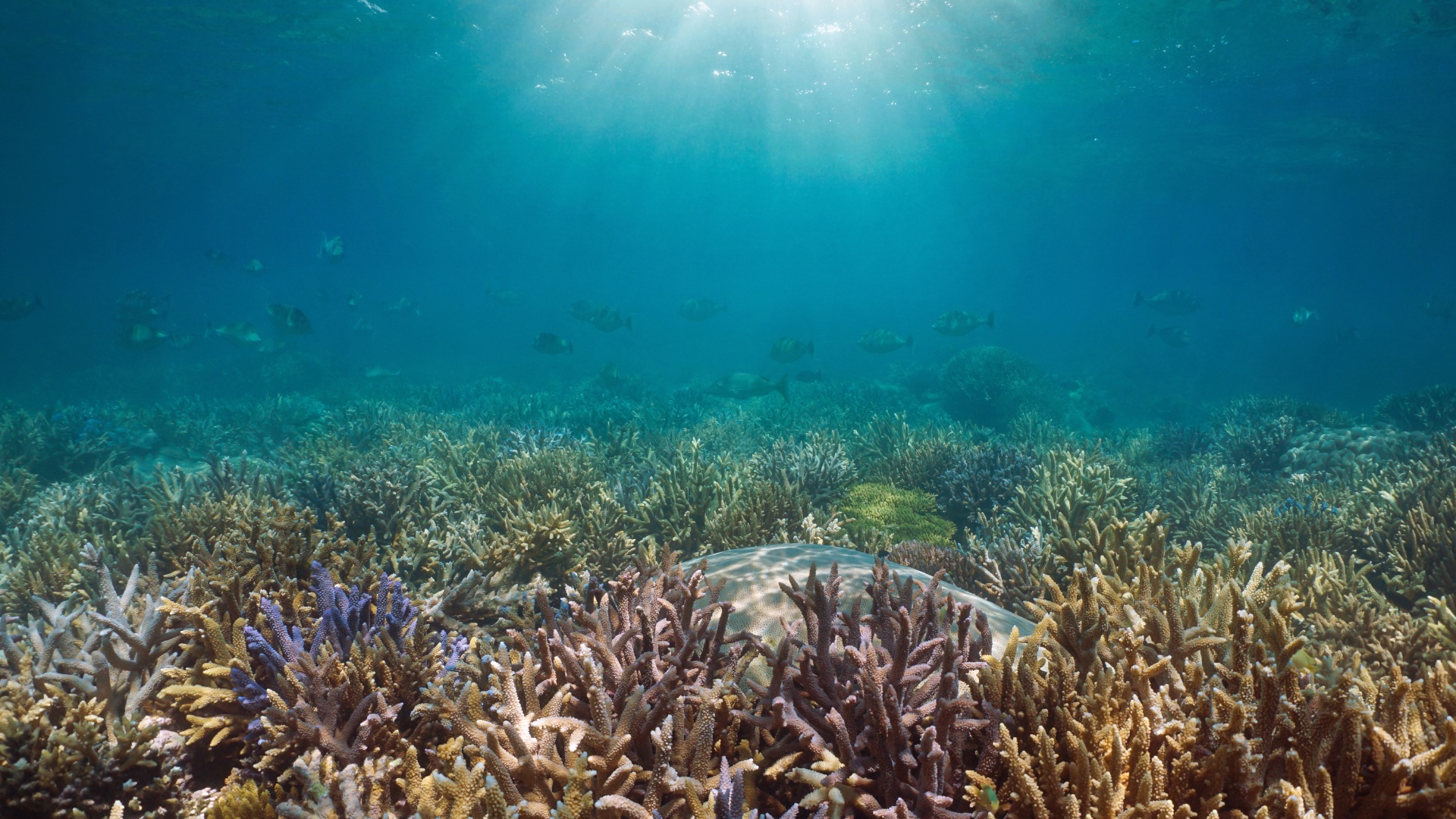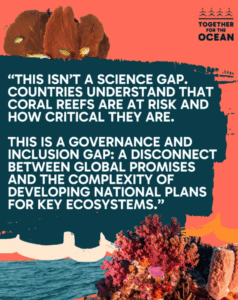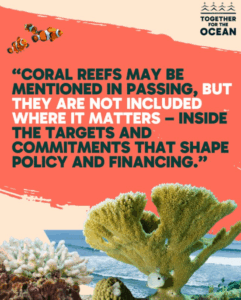A new analysis led by ICRI member the Wildlife Conservation Society, and supported by several ICRI members and partners, reveals that despite strong international agreements on biodiversity and climate change, national implementation is not keeping pace with the accelerating threats facing tropical coral reefs. The findings highlight a critical gap between global ambition and national action at a time when many experts stress that this decade represents a decisive moment for the future of reefs.
Bleaching-level heat stress has already affected more than 85% of the world’s coral reefs, impacting nearly all reef-holding countries. Yet the study shows that the 25 nations with the largest reef areas rarely translate their global commitments into measurable protections for these ecosystems.
Major Gaps in Biodiversity Commitments
Under the Kunming–Montreal Global Biodiversity Framework (KM-GBF),
- 71% of high-coral countries have submitted national biodiversity targets,
- but none include measurable, reef-specific commitments.
While all countries with submitted biodiversity targets adopted national versions of Target 3 (“30×30”), no nation set quantified goals for coral reef protection, and only one country linked climate impacts to its area-based conservation target. References to marine ecosystems under Target 8 were uncommon, and none incorporated measurable outcomes for reef resilience.
Climate Frameworks Show Similar Shortcomings
Under the Paris Agreement:
- Fewer than half (48%) of these countries mention coral reefs in their Nationally Determined Contributions (NDCs).
- Only three include measurable reef-related actions.
- Although seven countries reference reefs in their National Adaptation Plans, none define quantitative targets for reef protection or restoration.
This creates a significant disconnect. Reefs are recognised as vulnerable in narrative sections of national plans, yet they are seldom included in the measurable targets or indicators that guide action, monitoring, and funding.
Three Priorities to Close the Gap
The science is clear, the tools are available, and the next few years represent a critical window to close the gap in coral reef protection. The authors highlight three opportunities to strengthen national action:
-
Develop dedicated national coral reef strategies and plans.
These should align with national commitments yet provide the operational detail, inclusion of Indigenous Peoples and local communities, and targeted focus that reefs urgently require. -
National partnerships can translate into contributions to global biodiversity goals, like 30×30.
Elevating reefs within biodiversity planning would help countries direct conservation to climate-resilient reef areas and better harness political and financial support associated with “30×30”. -
Leverage climate finance to support reef adaptation
Including coral reefs as a natural climate solution in both NDCs and NAPs, particularly given their complementary role to ‘blue carbon’ ecosystems and indispensable contributions to many coastal communities, would unlock adaptation funding and elevate reefs as critical climate-resilient infrastructure.
The study concludes that coral reefs remain insufficiently represented across national climate and biodiversity frameworks, even in countries whose economies, cultures, and coastlines depend heavily on them. Strengthening alignment between global commitments and national implementation will be critical to safeguarding reefs and the communities who rely on them.
Source: Adapted from the blog post on Together for the Ocean by Alfred DeGemmis, Director of International Policy at WCS, and Rachel James, Global Coral Reef Rescue Initiative Lead at WWF.



